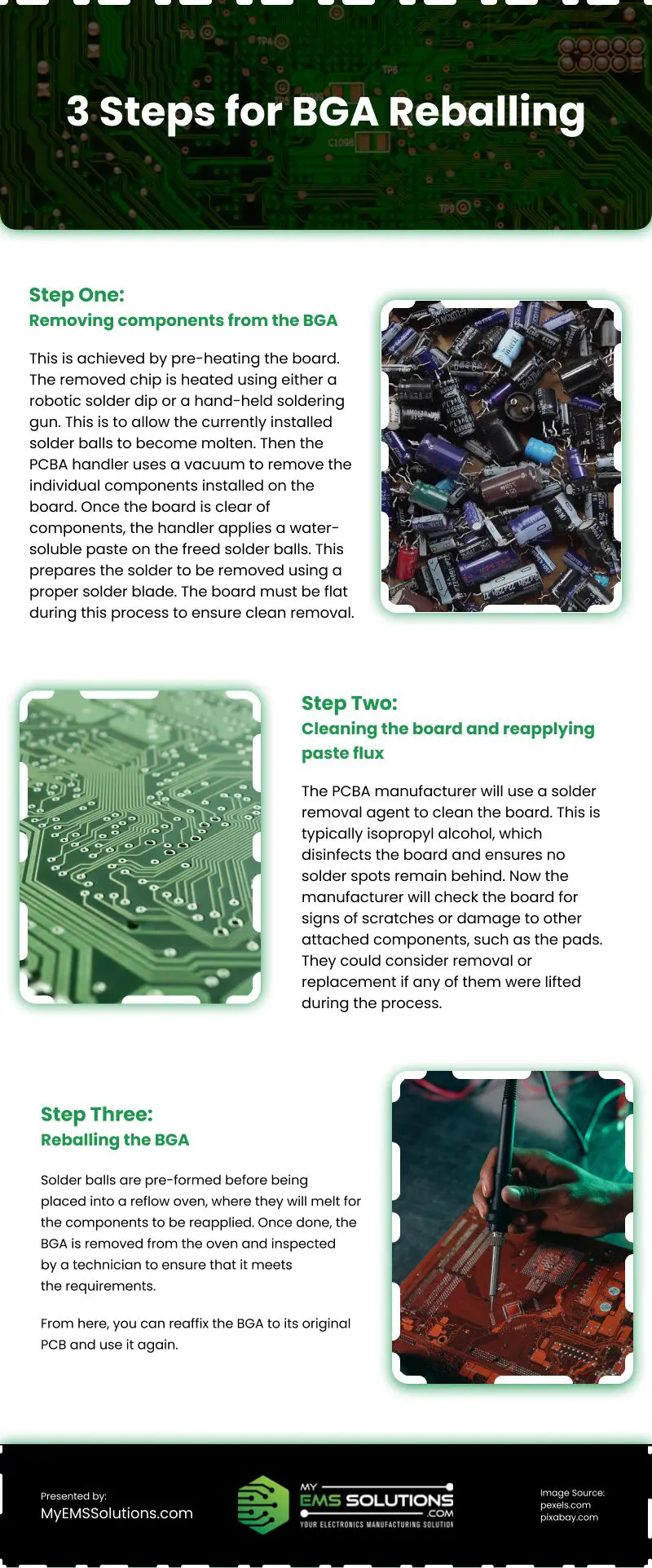
Computers and other electrical gadgets inevitably deteriorate with use. The breakdown of solder connections is the most urgent problem with BGA devices. The loss of image on a computer or television screen, which frequently seems unrepairable, is a typical reason for solder joint failure. Fortunately, BGA reballing may take care of these problems without the need to replace damaged equipment.
What is BGA Reballing?
Ball grid array (BGA) reballing entails changing every soldered ball on a chip. Reballing will assist in fixing problems if these solder balls should lose their effectiveness, components should fall out of alignment, or circuits should malfunction. A skilled technician achieves this by removing all the solder balls that are currently on the board’s surface.
How does Reballing Help Out?
Reballing a board is a less expensive alternative than replacing it entirely. For machinery that is often utilized, replacing the parts will be high-priced. It is nearly always preferable to have already installed components restored, and reballing is the best technique to restore BGAs to full operation.
How is Reballing Accomplished?
Reballing a BGA is a very straightforward procedure, although it is best carried out by a qualified expert. This service is provided by several EMS options as part of their PCB catalogs. Three key phases are broken down into a few jobs throughout the procedure. Which are:
Step One: Removing elements from the BGA
The maker starts by removing the reballing BGA chip from the PCB. This is accomplished by preheating the board to a comfortable temperature, which helps to avoid any damage when it is heated further. Either a robotic solder dip or a hand-held soldering gun is used to provide heat to each solder ball before the chip is removed. This will cause the solder balls that are currently in place to melt. When this occurs, the PCBA handler removes the individual components mounted on the board using a vacuum.
Step Two: Cleansing the board and reapplying paste flux
The PCBA maker will then clean the board using a solder removal solution. Isopropyl alcohol is usually used for this, as it cleans the board and guarantees that no solder spots are left behind. The replacement components might be hampered by any leftover solder or could become detached from the board as a result.
Step Three: Reballing the BGA
The solder balls are manufactured beforehand and connected. Although spherical solder is implied by the name “solder ball,” this is not always the case. Solder balls can also be rectangular or triangular to help with PCB installation. After that, the maker or assembler sets the solder balls in the same locations as before. The BGA is then placed in a reflow oven, where the balls will melt and the components will be reapplied. When finished, the BGA is taken out of the oven and examined.
A machine or device’s operation might suffer greatly from faulty or bridging solder. Often, the only way to fix these problems is to completely replace the pieces, which can be expensive and complicated. Reballing has made it possible for experts to clean and repair damaged or inefficient BGAs, making this process considerably more dependable.
source: https://www.myemssolutions.com/ever-heard-of-bga-reballing/
Comments
Download this infographic.
